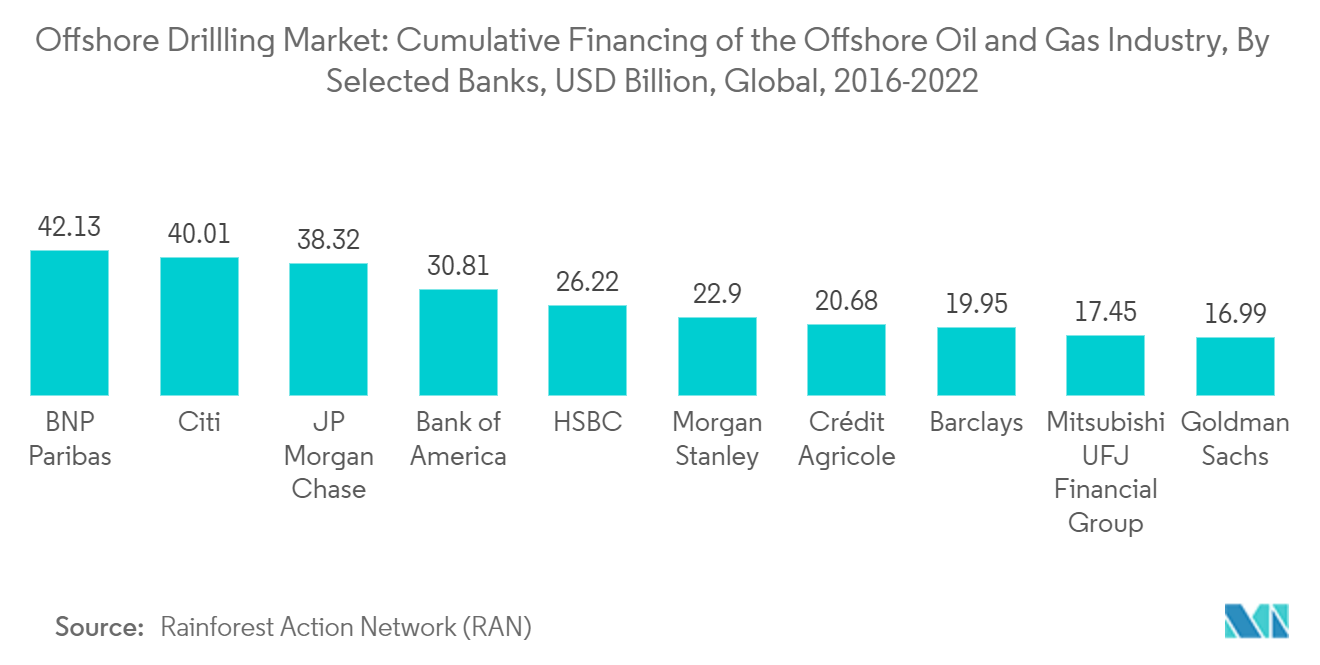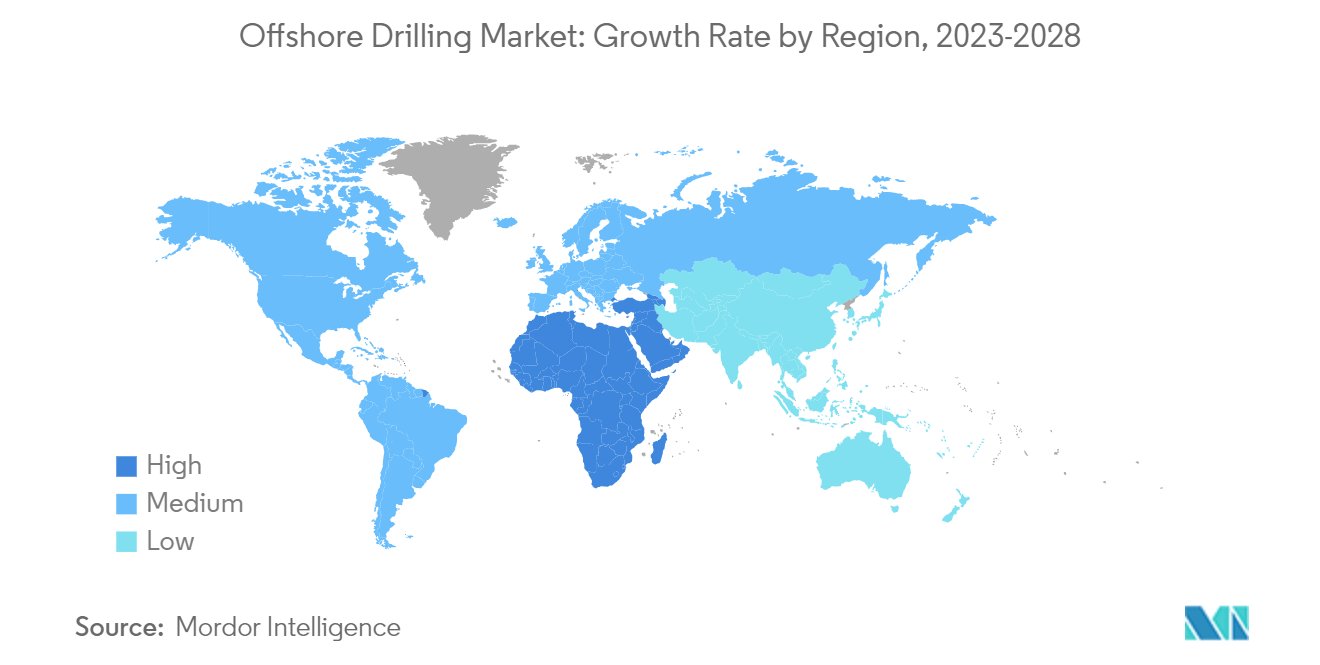Market Trends of Offshore Drilling Industry
Deepwater and Ultra-deepwater Segment to Dominate the Market
- Deepwater and ultra-deepwater drilling in offshore basins provide access to significant untapped oil and gas reserves. In many cases, these deposits are located far from the coastline and cannot be reached by drilling at depths far beyond the capability of shallow-water drilling. The exploration and production of deepwater and ultra-deepwater reservoirs are attractive because they contain large hydrocarbons.
- For the past several years, natural gas has witnessed considerable growth in its global production and consumption as countries are shifting from coal to natural gas as a primary energy source for cleaner energy. This scenario is expected to continue owing to the carbon emission targets set by various countries. Hence, with increasing natural gas demand, the demand for hydrocarbon production is expected to grow, thus leading to an increase in deepwater and ultra-deepwater activities.
- In addition to their high production potential, deepwater and ultra-deepwater fields may contribute to meeting global energy demands because they yield significant quantities of oil and gas due to the size and quality of their reservoirs. It is common for deepwater and ultra-deepwater wells to have higher flow rates than shallow-water wells, making them economically viable and attractive to oil and gas companies.
- For instance, in March 2023, the Oil and Natural Gas Corp. (ONGC) and TotalEnergiesentered a memorandum of understanding (MoU) to explore deepwater blocks in India. As part of the agreement, the French firm would provide technical assistance to ONGC in exploring deepwater blocks off India's east coast, particularly Mahanadi and Andaman.
- Furthermore, in August 2022, ONGC and ExxonMobil signed heads of agreement (HoA) to explore oil and gas deepwater on the Indian east and west coasts. Both firms would conduct exploration work focusing on the Krishna Godavari and Cauvery basins in the eastern offshore area and the Kutch-Mumbai region in the western offshore area.
- Moreover, the recent waves of cost reductions and critical technological breakthroughs have enabled many oil and gas exploration and production companies to expand their portfolio of sustainable deepwater developments. Also, several banks across the globe are financing offshore activities boosting the market for offshore drilling.
- Therefore, with the increase in deepwater activities and the technology breakthrough, the deepwater segment may grow during the forecast period.

Middle-East and Africa to Witness a Significant Growth
- The Middle East & Africa is one of the significant regions of proven oil and gas field reserves worldwide. The region's offshore accounts remain underdeveloped in Kuwait, Saudi Arabia, Iran, Qatar, Nigeria, Cameroon, and the United Arab Emirates.
- As of 2021, the total oil production in the Middle East & Africa reached 35,442 thousand barrels daily, of which offshore oil production accounted for a significant share. Besides holding nearly half of the world's crude oil reserves (about 64.1% of global oil reserves as of 2021), the Middle East has many natural gas reserves. The region accounted for 48.3% of the world's total proven natural gas reserves of 99,419 billion standard cubic meters as of 2021. Also, critical oil and gas reserves exist in offshore regions, such as Kuwait, Nigeria, Cameroon, etc.
- Moreover, with the rapidly increasing global energy needs, offshore oil production has become an attractive energy source. Therefore, countries with significant regional players focus on exploring offshore oil and gas fields.
- The region's offshore oil and gas exploration spending is set to grow significantly over the next few years. The availability of abundant resources, coupled with the increased potential to recover oil and gas from deep water and ultra-deepwater areas, is expected to provide an excellent opportunity for the offshore drilling market.
- Many countries in the Middle East and Africa have large-scale offshore oil and gas reserves. The world's largest gas field, the South Pars Gas Complex in the Persian Gulf, and the discoveries of oil and gas reserves in the eastern Mediterranean Sea are all expected to aid the market's growth.
- For instance, in February 2022, Abu Dhabi National Oil Company (ADNOC) kicked off a bid process for an engineering, procurement, construction, and installation contract for further development at its huge Lower Zakumoffshore oilfield. Furthermore, there are more than 77 and 27 approved upstream projects in the Middle East & Africa for 2021-2025. Such developments are anticipated to drive the offshore drilling market during the forecast period.
- Nevertheless, investment in offshore locations and new project agreements in the Middle East would likely increase in the coming years. Also, the vast resource potential, high global oil demand, and increased attention of other countries to secure energy supplies from the Middle Eastern region would initiate exploration & production projects in the area. Hence, it is expected to impact the growth of the offshore drilling market in the Middle-east and African region.
- Therefore, factors, such as upcoming offshore E&P activities, especially in the West African region, are expected to boost the number of offshore drilling in the area in the coming years.


